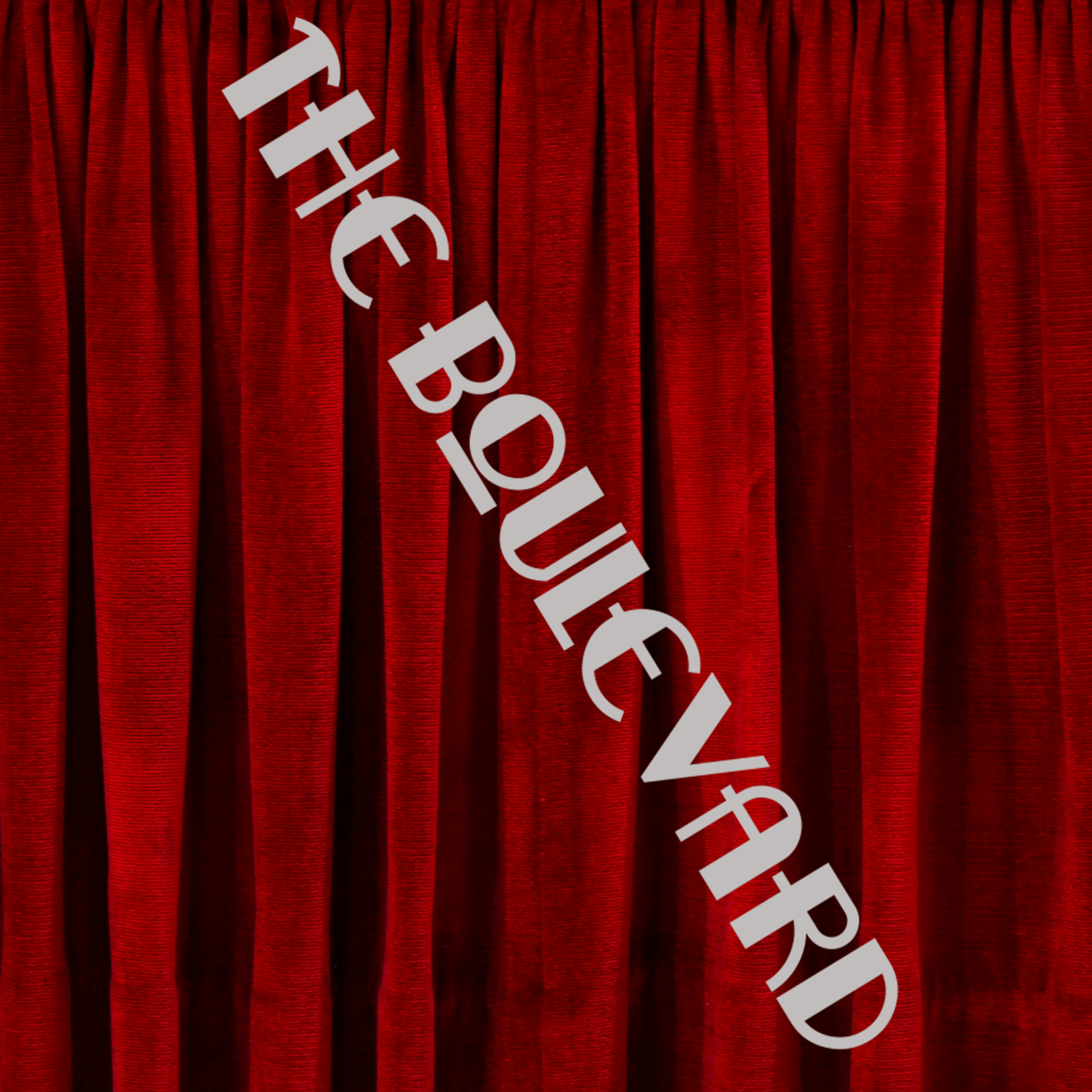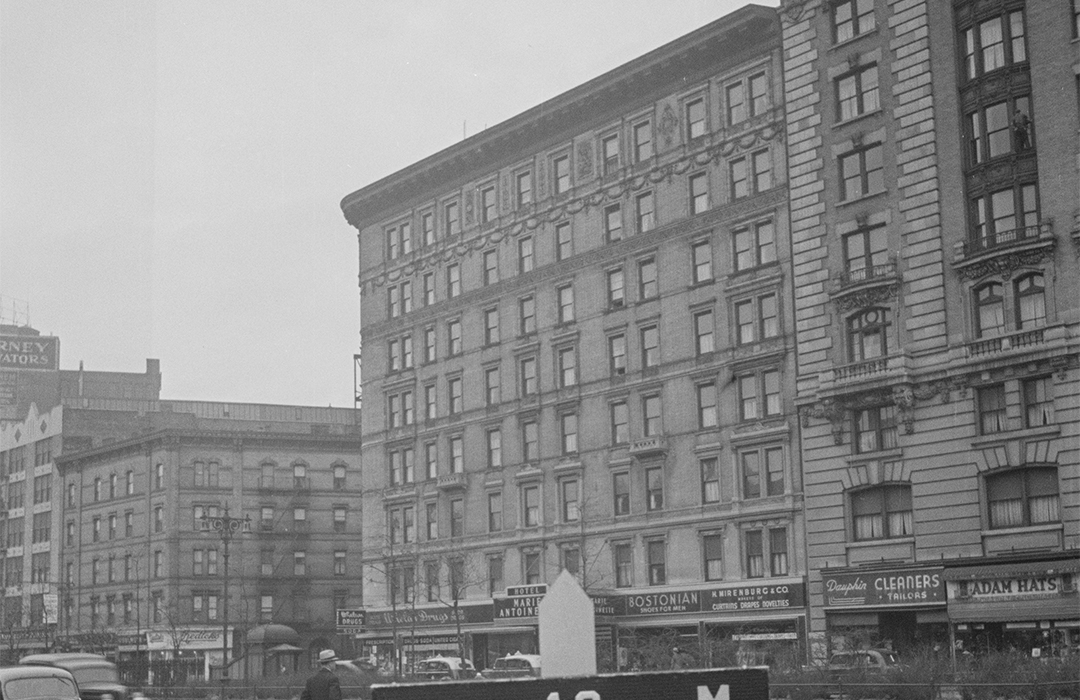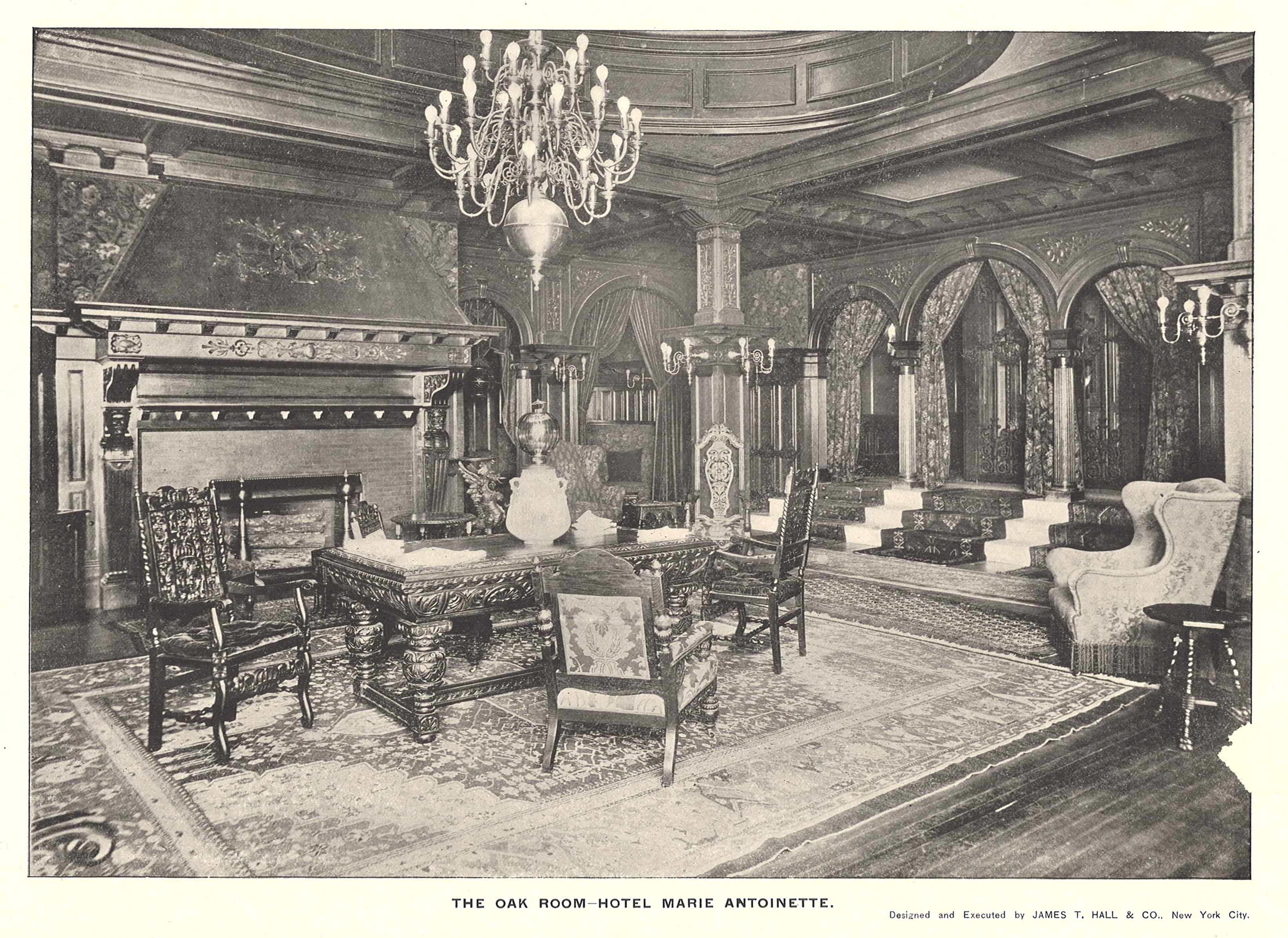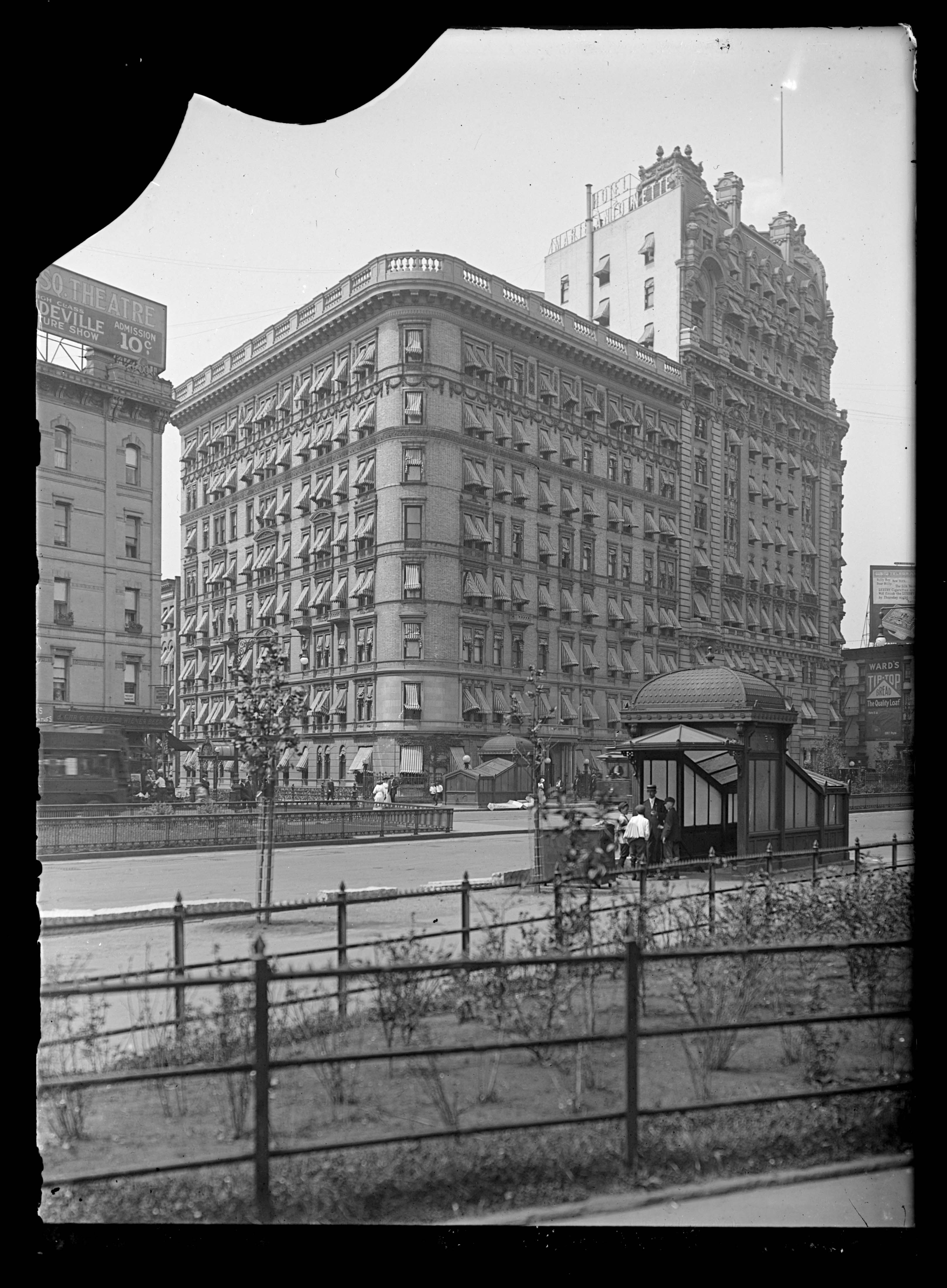
Hotel Marie Antoinette
by Tom Miller
In 1893, William L. Flanagan, the president and director of the H. Clausen & Son Brewing Company, decided to diversify. He hired architect J. Munkowitz to design a seven-story residential hotel on the northwest corner of Broadway and 66th Street. His subdued Renaissance Revival style design exuded taste and dignity. Faced in limestone, its Broadway corner was gently rounded, and the decoration of its midsection was limited to occasional Renaissance-inspired pediments over selected openings and bandcourses. Delicate carved swags hung from above the seventh-floor windows like sugary cake decorations. A stone balustrade sat atop the structure like a tiara. Construction cost Flanagan $225,000, or about $8.25 million in 2024.
Upon the Hotel Marie Antoinette’s completion on October 28, 1894, the New-York Tribune compared it to “some beautiful building from the White City of the [Chicago] World’s Fair.” The article said, “The proportions of the building are such as to give the effect of height, without appearing to scrape the sky…It is massive and substantial.”
Munkowitz’s restrained exterior belied the sumptuous, French interiors. The Tribune commented on wrought iron entrance doors, “the like of which are not to be found in New-York, except, perhaps, on the residence of Mr. Cornelius Vanderbilt.” This was the first time wrought iron doors had been used in a hotel building in the United States, said the article. “Wrought-iron doors are enormously more expensive than the ordinary cast-iron affairs…But their value in the Hotel Marie Antoinette, besides being beautiful, is real.” Cast iron, said the article, was “quite below the standard of Hotel Marie Antoinette taste.”
The journalist was awed by the public rooms, modeled after Versailles. “It is obvious at a glance that the most lavish expenditure had been made,” said the article. It described the main dining room, first asking rhetorically, “Is there just such a room in all New-York, and, indeed, anywhere?”
Munkowitz’s restrained exterior belied the sumptuous, French interiors.
A room neither too square nor too long, supported by columns of colored alabaster, heightened with gold Corinthian capitals. The color scale of the walls, modulating through successive tints of rose and crushed strawberry, suitable harmonized from ceiling to floor, diffused the brightest kind of rose-colored light suddenly relieved by the rich dark green of the portieres which shut off the street. These portieres, serving in themselves an eminently useful purpose, also suggest and introduce the contrast between the dining-room and the drawing-room, which has already been given a name–the Oak Room.
The Oak Room was paneled in carved antique oak under an immense stained-glass dome. Flanagan had purchased its antique furnishings in Europe. “An enormous rug covers the centre [sic] of the polished floor, old Venetian marriage chests serve as wood boxes, and a comfortable but enormous settee of carved oak and deep-blue tapestry invites the visitor.” The New-York Tribune predicted, “The Oak Room of the Hotel Antoinette will long be one of the things to be seen in New-York. Every piece is an heirloom.”
The article made note of an innovation in the restaurant, a space more intimate than the dining room. It was “the introduction of shaded electric lamps, coming up through the middle of each table, like flowers of light.”
There were 62 apartments in the building. “The rooms are large, and each suite is provided with a private hall, with the most luxurious kind of a bathroom.” The general floor plan provided each apartment with a large drawing room, two bedrooms, and a bathroom. The colors were selected from the Petit Trianon at Versailles. “Mahogany and rosewood are the prevailing woods used.” All rooms had both electricity and gas (electricity was not especially reliable in 1894). There were a few transient apartments, as well, which rented for $2.50 per night (about $90 today).
Among the earliest residents were theatrical producer, director, playwright, and impresario David Belasco and his wife, the former Cecilia Loverich. Another celebrated theatrical figure at the Hotel Marie Antoinette was Sarah Bernhardt. The internationally famous actress made it her home whenever she was in New York.
Edgar Van Etten, the general superintendent of the operating department of the New York Central Railroad, was an initial resident. He suffered a most embarrassing situation on October 10 that year. He and one of the railroad’s vice-presidents, H. Walter Webb, made an inspection trip along the line, and were on their way back to the city. They went to bed at 11:00. A porter packed Van Etten’s waistcoat, containing his gold watch and most of his money, into a small locker, and laid his trousers out on a chair of the private car.
At 7:00 a.m., when the train pulled into Scarborough, Van Etten “jumped out of bed in a hurry and called for his clothing,” reported The Sun. The porter returned to report that his trousers had been stolen. Also taken were his satchel and a dressing case. Because of Van Etten’s girth, no one on the train had a pair of trousers that would fit him. He was given a blanket “to wear.”
When the train arrived at Grand Central Station, Van Etten was unable to disembark. The Sun reported that a porter rushed to the Hotel Marie Antoinette in a cab “and corralled a pair of trousers of the required size.” The article said, “There was considerable merriment when the cause for the order became known to Mr. Van Etten’s friends.”
In 1901, William L. Flanagan divested himself of his real estate holdings, transferring the title to the Hotel Marie Antoinette to his sister, and selling the abutting, vacant lot on the southwest corner of Broadway and 67th Street. The following year the Boston Home Journal reported that a 12-story hotel was to be erected on that site. Among those leasing the proposed hotel, said the article, was Albert R. Keen, the manager of the Marie Antoinette.
Despite the new hotel, which opened on April 15, 1903, being larger and showier, Keen marketed it as an annex to the Hotel Marie Antoinette, causing understandable confusion for years.
Sarah Bernhardt was not confused, however, and continued to return to the original Marie Antoinette. She granted an interview to Nixola Greeley-Smith of The Evening World on December 1, 1912. The actress commented on the difference between the emancipated American woman and her French counterpart.
Because of Van Etten’s girth, no one on the train had a pair of trousers that would fit him. He was given a blanket “to wear.”
American women are monarchs. French women are martyrs, martyrs to love, it said that in France woman is a martyr to the family, while in America the family is a martyr to woman. But I do not agree with this epigram. I find in your women everything to admire and to envy.
In November 1926, the lease of the Marie Antoinette was taken over by Joseph E. Goulet. The New York Times reported, “Mr. Goulet intends to make extensive alterations in order to make this hotel of the standard of the hotels he has conducted for the last sixteen years on Broadway.” A years-long court battle between over which hotel–the north or south–could continue using the name Marie Antoinette ended in 1929. The newer hotel became the Hotel Dauphin.
In October 1926, Cecilia Loverich Belasco died. The memories of their many years together in the Hotel Marie Antoinette made continuing to occupy their apartment impossible for David Belasco. He broke his lease, writing to the management in part:
The thought never occurred to me that I should be leaving the Marie Antoinette, but then the thought never occurred to me that death would interrupt the union between me and Mrs. Belasco, and since that has taken place, I have suffered agony whenever I have entered our rooms, with their constant reminder of her every night. I thought I could promise to endure it, but it was too much for me.
Despite Belasco’s long-term residency and his heart-felt explanation, the management sued him for the $1,667 rent left on his lease.
The Marie Antoinette was given an Art Moderne ground floor lined with stores sometime before 1936. The Parisian-style wrought iron entrance doors were scrapped as streamlined storefronts replaced the limestone ground floor. Inside, the Versailles-inspired rooms were stripped bare, the floors replaced with terrazzo or tile, the paneling given over to bare plaster.
It all ended in 1963, when the Hotel Marie Antoinette was demolished as part of the vast Lincoln Square urban renewal project. A 32-floor mixed use structure occupies the site today.
Tom Miller is a social historian and blogger at daytoninmanhattan.blogspot.com
BUILDING DATABASE
Keep Exploring
Be a part of history!
Think Local First to support the businesses at 1961-1969 Broadway:
Meet Anthony M. Catsimatidis!
Meet FDNY Captain Michael Kori!




